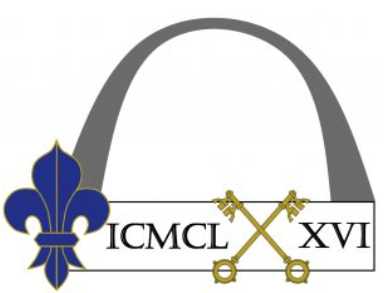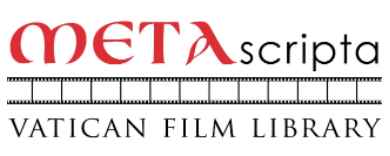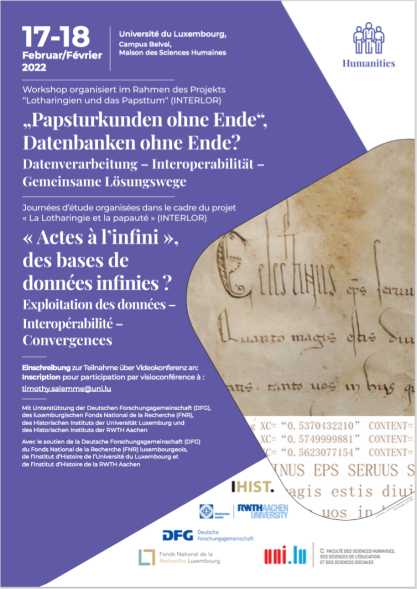 Even when you are interested in totally different subjects in medieval history emperors, kings and popes attract your attention. Their power and authority make them a natural focus for research, also because the most powerful people and institutions leave a rich track in archival records and manuscripts. Upheavals such as wars, fires and revolutions destroyed parts of this legacy in parchment and paper, but a massive amount of information has survived five or more centuries. The papal curia is rightly seen as one of the earliest and most active medieval bureaucracies. In 2019 the Vatican archives received a new name, Archivio Apostolico Vaticano (AAV) instead of the familiar Archivio Segreto Vaticano, a term which could led people to believe enormous secrets still await discovery. In my view the sheer number of documents, the challenge of languages, medieval scripts and intricate legal matters form the real barrier for abundant use of this archive in a class of its own. In this post I will look at the ways medieval papal registers are now made accessible in print and online. However, it is necessary and useful, too, to look also at least briefly at ways to find documents held at the AAV.
Even when you are interested in totally different subjects in medieval history emperors, kings and popes attract your attention. Their power and authority make them a natural focus for research, also because the most powerful people and institutions leave a rich track in archival records and manuscripts. Upheavals such as wars, fires and revolutions destroyed parts of this legacy in parchment and paper, but a massive amount of information has survived five or more centuries. The papal curia is rightly seen as one of the earliest and most active medieval bureaucracies. In 2019 the Vatican archives received a new name, Archivio Apostolico Vaticano (AAV) instead of the familiar Archivio Segreto Vaticano, a term which could led people to believe enormous secrets still await discovery. In my view the sheer number of documents, the challenge of languages, medieval scripts and intricate legal matters form the real barrier for abundant use of this archive in a class of its own. In this post I will look at the ways medieval papal registers are now made accessible in print and online. However, it is necessary and useful, too, to look also at least briefly at ways to find documents held at the AAV.
This post is also meant as a salute to the upcoming XVIth International Congress of Medieval Canon Law, to be held at St. Louis, MO, from July 17 to 23, 2022, and as a service to anyone interested in studying pivotal documents for the study of papal history and medieval canon law. For a real understanding of the documents mentioned here it will not do to merely having a glance at them, you will need to immerse yourself into them, and this will enrich you.
In this post the focus will be on access to the original documents, and much less on projects with databases for papal documents. A number of databases and projects for medieval charters is presented in a recent post.
Finding papal registers from the Middle Ages
Two years ago I stated in a post about digital resources rather flatly you cannot find any online inventory at the website of the AAV. This was not entirely true. In fact the four series of medieval papal registers are the very exception to my observation. I had better give you immediately the links to the inventories for these series:
– Registra Avenioniensia (RA) 1-349
– Registra Lateranensia (RL) 1-138 / 498-534 / 925-1126, 1128
– Registra Supplicationum (RS) 1-265 / 479 – 509 / 961-1169
– Registra Vaticana (RV) 1-545 / 772-884
These inventories can be found in the section for publications of the AAV website. I had not realized that the lists with the contents of the four cd-rom sets give you in fact at least a partial inventory of these registers. The cd-roms are only available at research libraries and cannot be accessed worldwide online. You will notice with me these four inventories seemingly do not list all registers of the four series, and I will come back to this fact quickly. For your convenience the overview of papal registers in chronological order by pope from Innocent III to Benedict XIII offered by the Centre Pontifical d’Avignon is very useful.
The modern editions of papal registers from the thirteenth and fourteenth centuries form the core of the subscription-only online resource Ut per litteras apostolicas hosted by Brepols. The overview of the Brepolis resources portal gives you a useful concise list of the modern editions published by French scholars since the late nineteenth century. In a period with no or very limited physical access to libraries I felt hard pressed to find a list of these editions in print. My copy of Raoul van Caenegem and François Ganshof, Encyclopedie van de geschiedenis der middeleeuwen (Ghent 1962) is a bit old. This first edition in Dutch contains relevant information at pages 211 to 215. Somewhat newer is my copy of Winfried Baumgart, Bücherverzeichnis zur deutschen Geschichte. Hilfsmittel-Handbücher-Quellen (12th ed., Munich 1997) with information on pages 170 to 173. The information given by Olivier Guyotjeannin, Jacques Pycke and Benoît-Michel Tock (eds.), Diplomatique médiévale (Turnhout 1993) at pp. 333-338 contains less details for the two major French edition series, but the editors send you rightly to the book of Thomas Frenz, Papsturkunden des Mittelalters und der Neuzeit (Stuttgart 1986).
On April 24, 2021 Yvonne Searle published a valuable post with links to various resources with editions of medieval papal documents. The editions of papal registers from the thirteenth and fourteenth century form just a section of her contribution. For these editions she points mainly to digitized versions in the Internet Archive and the Hathi Trust Digital Library. I hesitated to add here for a number of these registers links to Gallica and Princeton Theological Commons, but it would have been repeating a job already sufficiently well done.
Not only for English readers you might sooner or later, but preferably as soon as possible turn to the guide by the late Leonard Boyle, A survey of the Vatican Archives and of its medieval holdings (Toronto 1972; new edition 2001). Almost seventy pages of this book deal with medieval papal registers. Even a cursory reading of these pages should make you aware of the danger of any superficial approach of these registers. The general remarks in my post should be seen in the light of Boyle’s detailed explanations and telling examples. As a student I was explicitly told to read first this classic guide before going to Rome or Vatican City. His book should for once and all teach you the fact you need to know not only about the inventories or the editions, but also use every reliable guide you can find. Just reading Boyle’s remark that some Avignonese registers have been placed among the Registra Vaticana and vice versa should serve as a wake up call. For English readers his remarks about the contents of the various calendars created in England from papal registers are a must read. Instead of going blissfully unaware to digitized calendars at the British History portal reading Boyle’s explanations should alert you to many things concerning the study of papal registers.
Guidance to records of the medieval papacy
Far more voluminous than the surprisingly concise guide offered by Boyle is the guide created by Francis Blouin et alii (eds.), An Inventory and Guide to Historical Documents of the Holy See (Oxford 1998). First of all this fruit of the Michigan project (1984-2004) goes beyond the AAV also to other archives in Rome. There is an online version of Blouin’s guide at ArchiveGrid showing introductions to many hundred archival collections, including to the series with papal registers from the High Middle Ages. You can also benefit from the 2019 edition of the Indice dei Fondi e relativi mezzi di descrizione e di ricerca dell’Archivio segreto Vaticano is available online (PDF). The concise introduction to medieval papal records offered at the website of the Vatican Film Library should be mentioned here, too.
For studying records of the medieval papacy there is a wealth of scholarly literature. Some most useful basic introductions to the most important relevant works can be found in the section Analyzing Sources of the multilingual Swiss history portal Ad fontes (Universität Zurich). Searching for relevant scholarly literature is much helped by the online bibliography of the Regesta Imperii project in Mainz. The Regesta Imperii lists among its publications also the volumes of Papstregesten, systematic summaries of papal charters for the period 800 to 1198, an important help in studying this resource. An online resource in Munich, the Bibliographischer Datenbank Historische Grundwissenschaften, can be helpful, too, for finding literature. Both the database in Mainz and Munich can be searched with keywords (Schlagwort), the Munich database only in German. The portal LEO-BW (Landeskunde Entdecken Online-Baden Württemberg) has within its Südwestedeutsche Archivalienkunde [Archivistics for South-West Germany) in the section on charters (Urkunden) an illustrated introduction to papal charters, Papsturkunden by Anja Thaller. She points to online resources and mentions literature on several aspects.
Finding digitized papal records and manuscripts
In the compass of just one blog contribution it would in the end not help much to put in here literally everything. At my legal history website Rechtshistorie the page about canon law mentions a fair number of online projects concerning the medieval papacy. Over the years I have written here several posts on documents and manuscripts connected with the medieval papacy. In 2016 I published for example a post about the Palatini, the manuscripts originally from the library of the dukes of the Pfalz in Heidelberg brought to the Vatican Library in 1623 and now being digitized. Some manuscripts returned to Heidelberg, others remain in Vatican City.
Finding digitized manuscripts in the Vatican Library is easy thanks to the portal Digital Vatican Library. Perhaps it is more surprising to find also digitized archival records of the papacy at this portal. In my 2020 post about the 1352-1358 interdict on the city of Dordrecht I mentioned a number of digitized source editions, not only for the Avignonese papacy, but also for Dutch medieval history and the Vatican. My biographical research into a particularly interesting lawyer connected with the Dordrecht case led me to a latarium, a digitized register of verdicts and fines from the civil tribunal in Avignon (BAV, Vat. lat. 14774). Fourteen lataria ( BAV, Vat. lat. 14761 to 14774) have been digitized. Within the section for archives of this digital library you can find several small archival collections. There are also five notarial registers from Orange. I am quite aware that it might be possible to find more archival records among the digitized manuscripts of the BAV, and I hope to add them here or elsewhere.
It is harder to find digitized records online from the Archivio Apostolico Vaticano. Registers Introitus et Exitus of the Camera Apostolica between 1316 and 1324 (John XXII) 1334 and 1342 (Benedict XII) are the subject of digital editions as part of the project Ressources comptables en Dauphiné, Provence, Savoie et Venaissin (XIIIe-XVe siècle) with medieval accounts from four French regions and the papacy in Avignon and the region around this city, the Venaissin. Here, too, figures a papal register (Reg.Av. 46) among quite different resources, but it contains indeed accounts. In 2020 I thought this edition included also digitized images, but this is not the case.
Sometimes an approach from another direction can be helpful. We are used nowadays to viewing online digitized manuscripts and archival records in full color. The manuscripts digitized by the Biblioteca Apostolica Vaticana show a sometimes irritating watermark. Aaron Macks helps you every week to information about recently digitized manuscripts from the BAV. In former times scholars would often have no choice but to use black-and-white microfilms. The Vatican Film Library at Saint Louis University, St. Louis, MO, offers not only microfilms but also a useful overview by genre of manuscripts at the Vatican Library, an overview of papal registers, and the Metascripta portal for online research with Vatican manuscripts, mainly Vaticani Latini. On the page for medieval law of my website I mention more (digitized) microfilm collections.
A few years ago a team at the Università Roma Tre started the project In Codice Ratio for creating computerized character recognition in order to make possible automate transcription of handwritten text. In this project archival records from the AAV will be transcribed. As for now you can find the data set with the initial input and the ground truth, the set of images and transcriptions with a degree of error free results.
Many roads, many wishes
This post brings you perhaps less than you had expected, but it is longer than I assumed. Originally I planned a post dealing with text editions, digital libraries, inventories and digitized archival records. In the end I am happy I could recently write here about databases with medieval charters, among them papal charters, and in 2020 the papacy at Avignon figured large in a post. Thus the results here are at least less confusing and profuse. However, it was necessary to show indeed the variety of resources and some of the difficulties in using them for historical research, and in particular for legal history. If there had been a clear starting point for using online digitized records at the AAV I would surely have started here with them. The sheer mass of relevant text editions is overwhelming, although the Online Medieval Sources Bibliography is perhaps too generous in adding the label Papacy to many editions. Using multiple resources has as one implication thinking out of the box and working interdisciplinary without much ado. Legal history, too, should not be a confined discipline, a kind of silo as is the current phrase. Our discipline is well placed to question the use of digital resources when you or your students do not have the necessary skills and training to use them to their full extent. Combining such training and experience in using original sources should help you to tap the wealth of digitized medieval sources, and at the same time to be aware of what more can be found, what has been lost and which traces of such lost resources can enrich your research.
A postscript
Of course I was curious enough to find out quickly more about digitized registers among the manuscripts in the digital Vatican Library. For example, the manuscript BAV, Ross. 733 is a fifteenth-century register of taxes paid for the collation of diocesan sees. However, I should first of all add some registers from Avignon, starting with Vat. Lat 14775 with criminal inquests for the years 1365-1368 (copy in black and white), Vat. lat 14776 and Vat. lat. 14777 with verdicts in civil cases from 1364 and 1372, Vat.lat 14478, 14479 (fragments) and 14780, also from the fourteenth century. The descriptions of these registers clearly lack the word latarium for quick identification and grouping of Vat. Lat. 14761 to 14780.
Klaus Graf alerts at Archivalia to the fact a number of digitized edition of papal registers within the Hathi Trust Digital Library can be reached in open access only from the United States. Thus there is indeed space for another list of digital copies of these editions. Graf points also to some resources from Germany.








